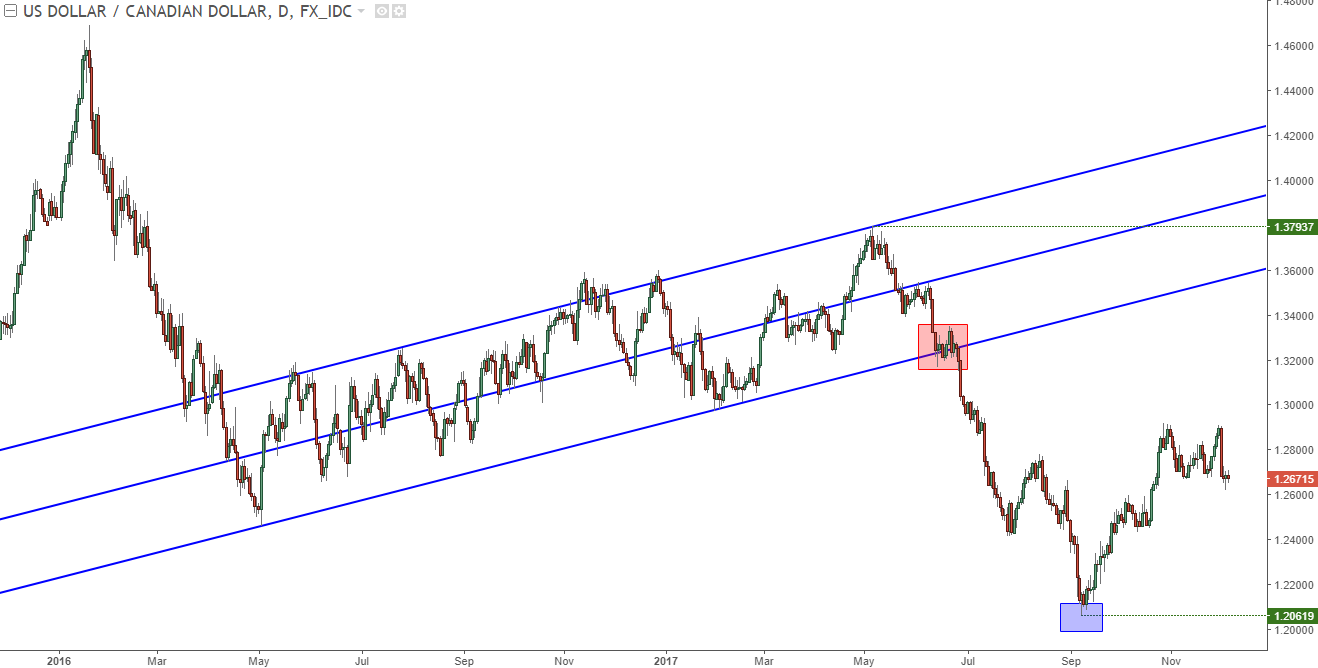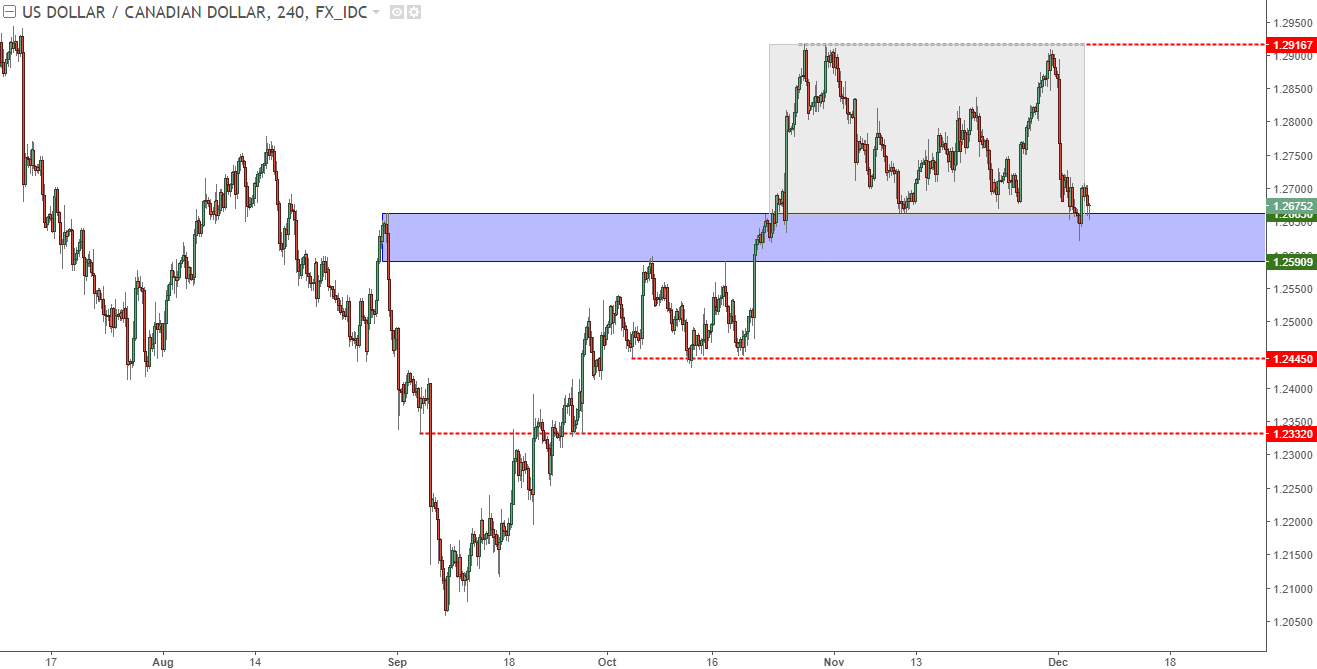The highlight of today’s economic docket comes in rather early. My colleague Christopher Vecchio discussed this rate decision earlier this morning, and expectations are very low for any moves at today’s meeting, currently showing sub-20%. Those odds begin to tick-higher as we move into 2018, however, and a more hawkish BoC statement could re-trigger the run of strength that has been seen in the Canadian Dollar for much of this year.
When the BoC started warning of rate hikes in May, CAD strength began to show after what had been a fairly weak prior 12 months. As the BoC ushered in that first hike in over nine years, USD/CAD broke below a bullish channel that had held the pair for much of the previous year. This led to a run of four months, from May to September that saw USD/CAD fall from above 1.3800 down to just above 1.2000. That low in September was set after the BoC’s second rate hike.
USD/CAD Daily: Major Trend Shift Driven by BoC’s Hawkish Twist

Since that second rate hike in September, USD/CAD has continued to digest previous losses while expectations have been getting a bit more passive around the BoC, leading us into today with the minimal expectations for any near-term hikes. But – as USD weakness has started to show with a bit more prominence or, perhaps more accurately, a lack of strength in the U.S. Dollar; USD/CAD has built-in to a range, as shown below in the gray box. Support for this range has shown around 1.2600, which syncs up with a set of prior swing highs from September/October.
USD/CAD Four-Hour: Range-Bound Past Month+, Support Test Ahead of BoC

USD Testing Short-Term Resistance Ahead of NFP
The U.S. Dollar has been rather quiet of recent, spending the past couple of weeks bouncing between 92.50 and 93.50. This leaves us in a rather muted spot on longer-term charts, as price action continues to find resistance around prior support while also building in near-term higher-lows. This can give us a type of ascending wedge formation, which could allow traders to move towards this congestion with a semi-bullish bias.













Leave A Comment